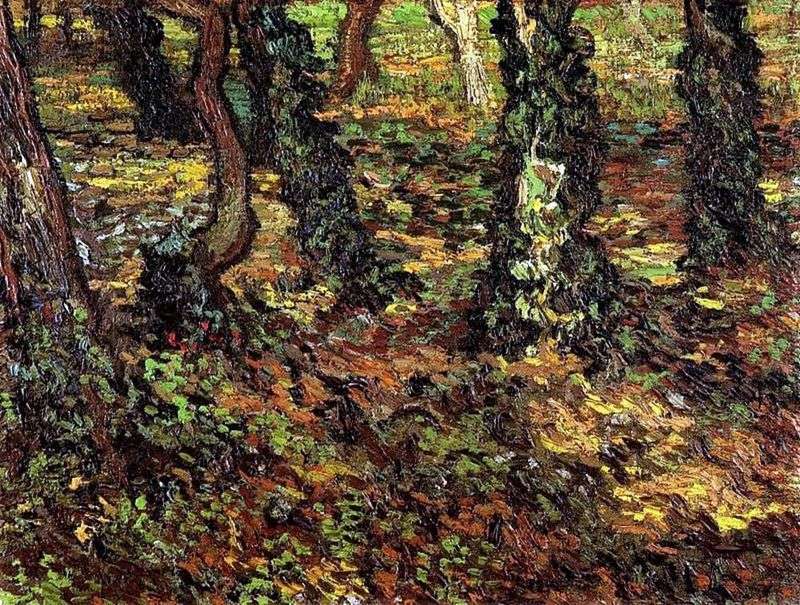
After the first course of treatment at San Remy hospital, Van Gogh was not yet in a hurry to write out. Doctors did not exclude the possibility of exacerbation of mental illness. But the continuation of stay in the hospital did not burden the artist, because he was allowed to draw. The reason for creativity Van Gogh found everywhere: in the interiors of the hospital, and in its appearance, and, of course, in the great wild garden that sprawled around it. He was inspired by large old trees, entwined with ivy, and growing under them untidy grass.
In this picture, Van Gogh focused on the bright sunlight. Penetrating through the dense crowns of trees, light falls on the shaded areas of the earth and covers it with a solid carpet of bright spots. The painting is written in scattered chaotic strokes that make it decorative and conditional.
Unlike the works of Parisian artist, this picture is written almost monochrome, with the help of close combinations of cold tones. Shadow areas are made in black, they barely stand out blue shimmer of penumbra. Even the light, the game which so fascinated the artist, is depicted as cold and unfriendly.
For the picture, Van Gogh chose a rather unusual angle of view – from the bottom up. This technique is called “frog perspective.” It is borrowed from Japanese engravings, which Van Gogh often copied.
 Trees in the Garden of St. Paul Hospital by Vincent Van Gogh
Trees in the Garden of St. Paul Hospital by Vincent Van Gogh View of Arles among flowering trees by Vincent Van Gogh
View of Arles among flowering trees by Vincent Van Gogh Wild Roses by Vincent Van Gogh
Wild Roses by Vincent Van Gogh Olive Trees by Vincent Van Gogh
Olive Trees by Vincent Van Gogh Trees by Vincent Van Gogh
Trees by Vincent Van Gogh Two crabs by Vincent Van Gogh
Two crabs by Vincent Van Gogh Starry Night by Vincent Van Gogh
Starry Night by Vincent Van Gogh Olive trees by Vincent Van Gogh
Olive trees by Vincent Van Gogh